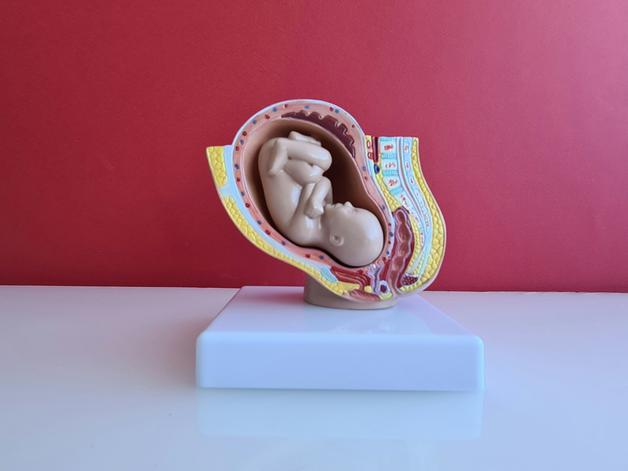Welcoming a child into the world is rarely scripted, and it’s common to confront unexpected scenarios—one of them being induction of labor. As the due date nears, you may wrestle with questions: Why is labor not starting on its own? Is accelerative intervention necessary—and, most importantly, is it safe? These uncertainties can provoke apprehension, hope, even a sense of powerlessness. Medical research and practical experience have shaped clear, reassuring paths through this process—offering not just technical solutions, but also empathetic support tailored for you. Here, we’ll demystify why induction of labor is considered, explore how the process actually functions, dissect the safety measures involved, talk openly about emotions, and emphasize the rights and choices that shape your unique birth story.
When Is Induction of Labor Considered? Examining the Medical Landscape
Ever wondered why induction of labor appears in so many discussions as you approach term? The landscape is nuanced; it draws heavily on clinical experience and advances in perinatal science. Common triggers include a pregnancy that persists past 41 weeks—what many call a “post-term” scenario—where placental efficiency can start to decline, raising risk for mother and baby alike. Think of maternal health conditions: uncontrolled high blood pressure, gestational diabetes that tips the metabolic balance, or persistent fatigue that complicates late pregnancy. On the fetal side, restricted growth or changes in fetal heart rate monitoring can flag a need for timely delivery. Premature rupture of membranes, where the amniotic sac breaks before contractions begin, is another frequent reason; this situation increases the risk of infection with every passing hour.
Yet, blanket rules do not exist. Recommendations ride on regular ultrasound assessment, cervical examination (often expressed as the Bishop score), and a careful conversation about your overall health history. Even practical issues—like living far from the hospital or managing previous medical complications—might enter into the discussion. Each decision to proceed with induction of labor is framed as an individualized balancing act between risks and benefits, shaped collaboratively by you and your care team.
Preparing for Induction: Initial Assessment and Informed Consent
The hours before induction of labor are both technical and emotional. Expect a flurry of initial checks: blood pressure measurement, fetal heart rate tracing (using a fetal monitor that records your baby’s response to contractions in real-time), and targeted blood tests to rule out infection or clotting problems. The Bishop score is pivotal—it rates your cervix on five points (dilation, effacement, consistency, position, and the baby’s station). A “low” score signals the need for cervical ripening with prostaglandins or a mechanical balloon; a “high” score promises a potentially smoother path.
None of these steps take place without you. Informed consent underlines every step. Healthcare professionals will detail not only the medical indications but also the nature of procedures used, possible risks and side effects, and proven alternatives. It’s the kind of conversation where all questions—clinical or personal—deserve full attention and respect.
Methods of Induction: Medical, Mechanical, and Complementary Options
What does induction of labor look like, practically? The array of methods speaks to the diversity of situations parents face:
- Prostaglandins: These synthetic hormones, applied as a gel or pessary to the cervix, prompt it to soften and thin. The response is closely watched to minimize risks of uterine hyperstimulation.
- Oxytocin: Delivered through an IV, this hormone mimics your body’s natural signal to initiate contractions. Dosage is adjustable, staged to achieve a rhythmic pattern that is productive but safe.
- Mechanical balloon catheter: Imagine a gentle balloon inserted into the cervix, exerting just enough pressure to nudge it open. This mechanical approach is especially useful when medical contraindications limit other choices.
- Membrane sweeping: During a vaginal examination, your provider may carefully separate the amniotic sac from the cervix, fostering the release of natural hormones.
- Amniotomy: If the cervix is open enough, controlled rupture of the amniotic membranes can set labor into motion, always with real-time monitoring to ensure wellbeing.
There’s growing interest in supportive, non-medical methods (sometimes called “natural induction”). Gentle physical activity, supervised nipple stimulation (boosting natural oxytocin), even eating dates late in pregnancy are discussed, though evidence varies. Any use of herbal teas, acupressure, or osteopathic care should be vetted with medical input, prioritizing safety above all.
Contraindications and Special Considerations: When Induction Is Not Advisable
Are there scenarios where induction of labor is off-limits? Absolutely. Placenta previa, where the placenta sits too low over the cervix, excludes vaginal birth altogether. A transverse fetal lie (baby positioned sideways), or certain scars from previous uterine surgery, can elevate risk profiles to unacceptable levels. Each potential induction is rigorously cross-checked against these red flags during pre-assessment. In these cases, alternative strategies or planned cesarean delivery take precedence.
Hospital Process: What Parents Can Expect
Stepping into the maternity ward for induction of labor marks a new stage. The environment is scrutinized for both technical excellence and emotional support. You’ll discuss your birth preferences with the team, review your plan, and confirm every procedural step. Continuous electronic monitoring becomes standard: the baby’s heart rate, your contractions, and your own comfort levels are documented and reviewed moment by moment. Each intervention is tailored and explained—whether it’s applying a prostaglandin, inserting a balloon catheter, or starting an oxytocin drip. Should progress stall, or should signs of fetal distress emerge, every shift in the plan is openly discussed.
Pain Management: Techniques for Physical and Emotional Comfort
Many parents worry about pain intensity during induction of labor—rightly so, as induced contractions can feel sharper or arrive more rapidly than spontaneous ones. The full spectrum of pain relief is available:
- Epidural analgesia provides thorough numbing and is often requested, but alternatives thrive—light analgesics, warm baths, guided relaxation, or manual techniques like massage and specific maternal positions.
- The calming impact of a trusted partner, encouragement from staff, and respect for your coping preferences often matter as much as medications. Open reflection on your concerns is encouraged—no one’s tolerance or strategies look quite the same.
Emotional Readiness and Psychological Support
It’s not all physical. Anticipating induction of labor can bring emotional turbulence—relief, frustration, or even disappointment, particularly if original birth plans shift unexpectedly. Prenatal classes or workshops targeting labor induction, guided breathing, and coping tools can provide a sense of control. Strong bonds with medical caregivers and feeling informed every step of the way can transform anxiety into trust. Your emotional responses are never trivial—they’re attended to with as much care as your physical wellbeing.
Safety Protocols: Monitoring, Risk Mitigation, and Predictors of Success
The safety net surrounding induction of labor is extensive and scientifically grounded. Continuous fetal monitoring checks for reassuring heart rate patterns, while maternal parameters are recorded rigorously—blood pressure, temperature, and frequent cervical examinations. If labor slows, or distress signals arise, providers react quickly; sometimes that means shifting to cesarean delivery. Innovations—like remote fetal surveillance or digital checklists—are being woven into care, ever refining prediction and response.
Risks are low but real. Uterine tachysystole (more than five contractions in ten minutes)—particularly linked to prostaglandins—may occasionally affect fetal oxygenation. Infections are more likely if the amniotic membranes have been ruptured for significant periods. Rarely, uterine rupture can threaten both mother and child, especially with prior uterine scars. Postpartum hemorrhage warrants vigilance, though comprehensive monitoring is designed to detect early warning signs.
Alternatives to Induction: Expectant Management and Complementary Approaches
Parents sometimes ask: What if induction of labor feels too fast, or appears avoidable? If medical urgency is absent, expectant management—a watch-and-wait approach—may be offered, with regular ultrasound assessment and fetal monitoring. Holistic practices such as acupuncture and supervised relaxation therapies—again, only under expert guidance—can help parents cultivate resilience while awaiting spontaneous onset.
Parental Autonomy, Rights, and Team Communication
Throughout induction of labor, your informed choices matter profoundly. Autonomy is rooted in detailed explanations: indications for induction, mechanisms, anticipated benefits, potential side effects, and all available alternatives. Leading organizations like WHO and ACOG champion not just evidence-based approaches but also the prioritization of parental values, open disclosure, and shared decision-making. Your questions are not just welcome—they’re essential.
Recovery After Induction: Navigating Physical and Emotional Healing
The days following induction of labor can be marked by deep fatigue and fluctuating emotions. Routine postpartum check-ups monitor healing, track potential complications, and support early parenting. Breastfeeding, bonding, and emotional adjustment—each are integral to this delicate period. Reaching out for support, leaning on friends, family, or local professionals, and recognizing your own limits all promote steadier recovery.
Feelings of disappointment or exhaustion may surface. Support groups, workshops, professional counseling, or resources such as the Heloa app provide confidential space to process these experiences, gain reassurance, and discover practical guidance customized for your family.
Key Takeaways
- Induction of labor is a science-based process, steered by clear medical indications and an unwavering focus on the safety of both mother and baby.
- A breadth of techniques exists—pharmacologic agents like oxytocin and prostaglandins, mechanical methods such as balloon catheter, and informed use of adjunctive holistic approaches—each selected in light of your medical situation and preferences.
- Transparent assessment, continuous electronic monitoring, and multidisciplinary collaboration ensure safety nets remain strong before, during, and after the birth.
- Communication, parental autonomy, and the right to full information underpin every decision—your involvement is not peripheral but central.
- Risk factors and contraindications are scrupulously checked, and alternative strategies such as expectant management remain available where safe.
- Recovery after induction of labor—physical and emotional—requires robust social and professional support. Don’t hesitate to seek out local services, peer networks, or tools such as the Heloa app for personalized advice and accessible questionnaires for your child’s health.
Every birth journey is uniquely shaped by your values, your context, and the science guiding modern obstetrics. With support, information, and compassionate teamwork, parents can step into induction of labor with confidence and greater peace of mind.
Questions Parents Ask
Can I eat or drink during labor induction?
Many parents wonder if they can eat or drink when labor is being induced. Hospital policies often vary, but in general, light meals may be allowed before the process starts, especially in early stages. During active induction, especially if there’s a chance of a cesarean, you might be asked to stick to clear fluids or ice chips. The goal is to maintain your comfort while also ensuring safety in case a surgical intervention becomes necessary. Don’t hesitate to ask your care team what is recommended—you can discuss what feels best for you within safe limits.
How long does labor induction usually take?
The length of time for labor induction can vary widely. For some, the process may begin within a few hours, especially if the cervix is already soft and open. For others, especially if cervical ripening is needed, it may take a day or even longer before active labor starts. This timeline depends on your body’s response, the methods used, and your individual circumstances. It’s completely normal to feel impatient or anxious—the care team is there to support and update you every step of the way.
Will labor induction increase the risk of needing a cesarean birth?
This is a common concern and it’s understandable to feel apprehensive. Research shows that, in some cases, induction of labor can raise the chances of a cesarean, particularly if the cervix isn’t ready for labor. However, careful monitoring and choosing the most appropriate method based on your situation help minimize this risk. Remember, each person and pregnancy is unique, and your healthcare team will tailor the plan to maximize the best possible outcome for you and your baby.

Further reading:









